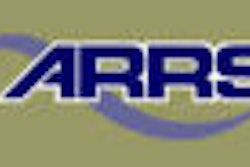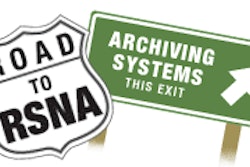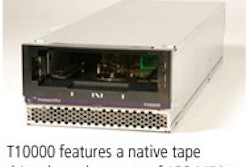There is an old adage: "If it ain't broke, don't fix it." Unfortunately, the PACS market is broken and needs some serious fixing. The way PACS is bought and sold, the way the systems are being marketed, the way R&D is done -- none of it is keeping up with the times.
Vendors will no doubt say, "We've seen more business now than ever before." Hospitals will say, "We've never needed or wanted PACS more than we have now." Both statements are correct, yet the positive impact of PACS can be exponentially increased if it is done much better than it is being done now.
Before anyone accuses me of being Howard Beale (of "I'm mad as hell, and I'm not going to take it anymore" fame from the 1976 movie "Network"), let me say that much of what follows isn't new, at least to those who have read my ramblings before. I'm just hoping it finally sinks in.
PACS: Still an adolescent?
Even though PACS has technically been around since the early 1980s, and I've been writing about it since 1988, it is really just entering its adolescent phase, since it really didn't begin to take off until the early 1990s. There are also two absolutes that anyone who has teenagers knows accompany these special years: one, that teens have highly selective hearing; and two, that they know it all. And so it goes with PACS....
PACS customers are always trying to get a great deal, yet the expectations they have for vendors don't necessarily coincide with obtaining a great deal. While a PACS sale may range from $500,000 to the millions of dollars, a vendor will spend from $20,000 to $60,000 in resources to try and close a single sale. Given an average sale closure rate between 20% and 33%, this means a vendor is spending $100,000 to $300,000 on each sale they actually make. This cost is ultimately passed on to the customer in the form of margin.
Why are the vendors spending so much? Each onsite visit made by a PACS sales or support person costs the vendor between $1,000 and $2,000, and every day spent on the account by support personnel (who do everything from configuring request for proposal [RFP] responses to arranging demo shipments to assisting with contract negotiations) costs at least $500. With the average PACS sale taking anywhere from 10 to 30 onsite visits, including contract negotiations, plus countless hours of time behind the scenes, you can see how the costs escalate very quickly.
There is more, though. Vendors tend to use the "more is better" approach with PACS -- the more visits they make to the client and the more people they bring in, the better their chances are of winning the sale. The reality is nothing could be further from the truth.
True, there are numerous questions that arise over the course of the vendor evaluation period that need to be answered, but in more cases than not these don't require a visit and can often be handled by phone. Unfortunately companies don't believe that. I've seen vendors bring in as many as eight people to do a technical review where they could have gotten by with two, especially since only those two spoke while the other six just sat there and looked pretty in their navy blue suits. Cost to customer? $20,000.
Customers also always want to go on site visits as well, and sometimes on multiple visits. While these can be very helpful in seeing a PACS in clinical operation, the costs for the visit can be staggering -- a minimum of $10,000 for an average visit with four people. Sometimes a hospital will pay the travel costs itself to avoid any impropriety, but more often than not they expect a vendor to pick up the costs.
So how do we change it? It's not as easy as it seems. Customers are still woefully uneducated on PACS, yet vendors insist on sending a rep out in person to answer questions that could just as easily be answered by phone. Both share the blame here.
It's unfortunate, but 20 years later, PACS customers still make that vast majority of PACS decisions based on vendor relationships and not facts, at least with the major vendors. Smaller vendors tend to compete, or feel they compete, largely on feature sets, but when all is said and done, price (and to a lesser degree overall value) is the item that usually tips the card a vendor's way.
Customers also love to play the RFP game, sending RFPs out to five or six vendors and expending gobs of vendor resources, when they had a 90% certainty that they were going with one vendor in particular. This begs the question: Why not save the effort and evaluate that vendor first, and if they are a good fit just go with them? Because in a hospital environment, hospital administrators and board members typically want you to document that you've done proper due diligence and looked at multiple vendors before they authorize the funds for a PACS acquisition.
There is also the game of playing one vendor against the other to get the best deal, but the reality is if you come armed with proper information, including comparable system prices, there really should be no need to play the pricing game.
So is this all silly? You bet, at least in my opinion. When you look at vendor costs that are incurred, combined with internal hospital resources wasted over several months, there just has to be a better way. And there is. It's called completely changing the sales paradigm. Instead of chasing rainbows, vendors need to start qualifying customers.
A qualified customer
So what defines a qualified customer? Having a PACS plan is critical. If the client can't produce a reasonable well-thought-out PACS plan, including providing listings of all modalities and their DICOM conformance levels, volume and growth data, data migration plans, and most importantly, be able to identify what problems they are hoping for PACS to solve (since 75% of the PACS planning process deals with process reengineering versus technology implementation), then the vendor should defer quoting a system to them and instead either work with them to develop this plan (either for a fee or as a service) or send them elsewhere to get it done.
Unfortunately this is contrary to Sales 101, where it is felt that the vendor's responsibility is to make the sale and the customer's is to worry about whether it's the right solution or not. Before I get accused of self-promotion, I am NOT advocating that every site engage a PACS consultant to develop this plan; if anything, consultants are NOT needed here.
Vendors should also have checklists to provide clients with everything they need to put together a plan. Unfortunately, the vast majority don't, leaving it up to the clients to flounder on their own, with the end result being that the sales process takes four times as long to close a deal as it would have if the information had been correctly presented.
This is a shared issue -- vendors need to say "no" up front, and customers need to accept responsibility for making sure the vendor has all the information they need about their requirements so the vendor can put together a proper, cost-effective solution.
Having a reasonable approved budget is also critical. Having money for PACS in the budget is one thing; getting approval to spend the budgeted monies is another. I've seen way too many PACS projects get pulled when budgets were submitted, but for one reason or another the money was never approved to be released, and all the efforts were for naught.
Having all the necessary infrastructure (network, RIS, etc.) in place to make PACS a success is item 3. Neither party should assume one knows what the other has or doesn't have. Ask, restate, and ask again. Also, think two to three years out -- What will be replaced, upgraded, and updated? And make sure the plan includes this.
Having an established, balanced committee that includes radiology, radiologists, IT, purchasing, the "C suite" personnel (CEO, CIO, CTO, CFO, etc.), and others is critical. Too many companies sell to the C suite, thinking they make the ultimate PACS decision. They don't. Radiologists are by and large the largest influencers of PACS decisions, followed by IT. The C suiters give their blessings on the final decision made by the committee, and that's it.
Contrary to what many think, developing an RFP is NOT a requirement to obtain a PACS; all you need is a PACS plan. Unfortunately, this is the place where most consulting firms make all their money -- providing an overpriced solution to a fairly simple problem.
If the plan is in place, you can develop a brief (10- to 12-page) technical spec to give to a vendor and get some reasonable semblance of response that addresses your needs -- if the vendor takes the time to read it, that is. Unfortunately, too many vendors use templated solutions as the basis of their initial response ("250-bed community hospital? Give them response 34") especially when they are in a "competitive" situation, and then, if/when they get into the finals, they put a little further effort into their response.
You really can't blame the vendor though -- there are still people out there who think more is better when it comes to defining their needs, and give the vendor seven days to turn around a 3-inch thick RFP. They then send it out to 10 vendors when they pretty much have made their vendor decision before the RFP even hits the streets.
Looking for an answer
So what's the answer to all this? One word -- education. Unfortunately, outside of the Society for Computer Applications in Radiology (SCAR) annual conference and a few very select PACS seminars, there are very few venues for the customer to learn how to perform a proper PAC system evaluation, how to develop a proper contract, and other tasks necessary for making informed PACS decisions. More importantly, there are very few sources of objective information available. While most PACS vendors will give you whatever information you need or at least what they feel you need, the information can be suspect at best.
And what about PACS consultants? Most good consultants will spend up to an hour on the phone with you at no charge. In that time frame, you should be able to figure out if you're ready for PACS or not. Still, even giving away an hour, most consultants want to land the big fish, not fry a bunch of minnows.
The reality here is that the entire market has changed for PACS consultants -- very few are landing the big fish anymore, with the majority content just to eat. The vast majority of the business we've conducted over the past year has been doing PACS sanity checks, in which the customer makes the vendor decision and we just review the proposed configuration to ensure it will meet their requirements and assist with contracting.
Instead of contracting for $50,000 to $100,000 soup-to-nuts engagements that took months to get through -- only to bring the customer back to the same vendor they initially selected before the process even started -- customers instead are saying, "Here's who we picked. What do you think?" and getting the same answer in under a week for less than $5,000. It makes more sense for everyone doing it this way.
Part II of this article will address the global challenges the industry faces, from dealing with 10-year-old standards that are supposed to guide a market that changes on a daily basis, to the investment market which consistently throws good money after bad by conducting due diligence that is neither diligent nor timely, to contracts from hell, to market consolidation that is causing consternation among facilities and vendors alike -- who will live, who will die, and why, and much, much more.
The more I think about it, maybe being like Howard Beale isn't so bad after all, because the truth is I AM mad as hell and no one is more politically correct than the PACSMan. Now, about that great deal I'm making you on that bridge we discussed....
To be continued.
By Michael J. Cannavo
AuntMinnie.com contributing writer
April 6, 2006
Michael J. Cannavo is a leading PACS consultant and has authored nearly 300 articles on PACS technology in the past 15 years. He can be reached via e-mail at [email protected].
The comments and observations expressed herein do not necessarily reflect the opinions of AuntMinnie.com, nor should they be construed as an endorsement or admonishment of any particular vendor, analyst, industry consultant, or consulting group. Rather, they should be taken as the personal observations of a guy who has, by his own account, been in this industry way too long.
Related Reading
The 2005 PACSman Awards: This PACS is your PACS, this PACS is my PACS, November 30, 2005
Part VII: Exploring PACS Secrets -- Pre-RSNA edition, November 28, 2005
Part VI: Exploring PACS Secrets -- State of the market, October 10, 2005
Part V: Exploring PACS Secrets -- Buyers and sellers, December 16, 2004
The 2004 PACSman Awards, December 1, 2004
Copyright © 2006 AuntMinnie.com



















